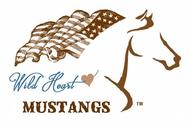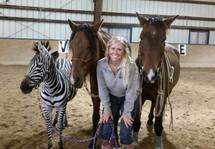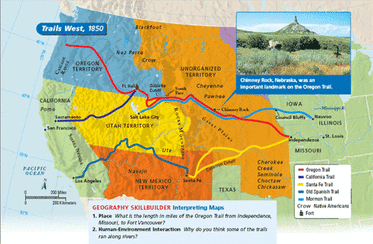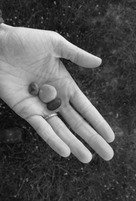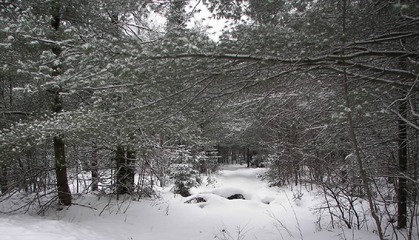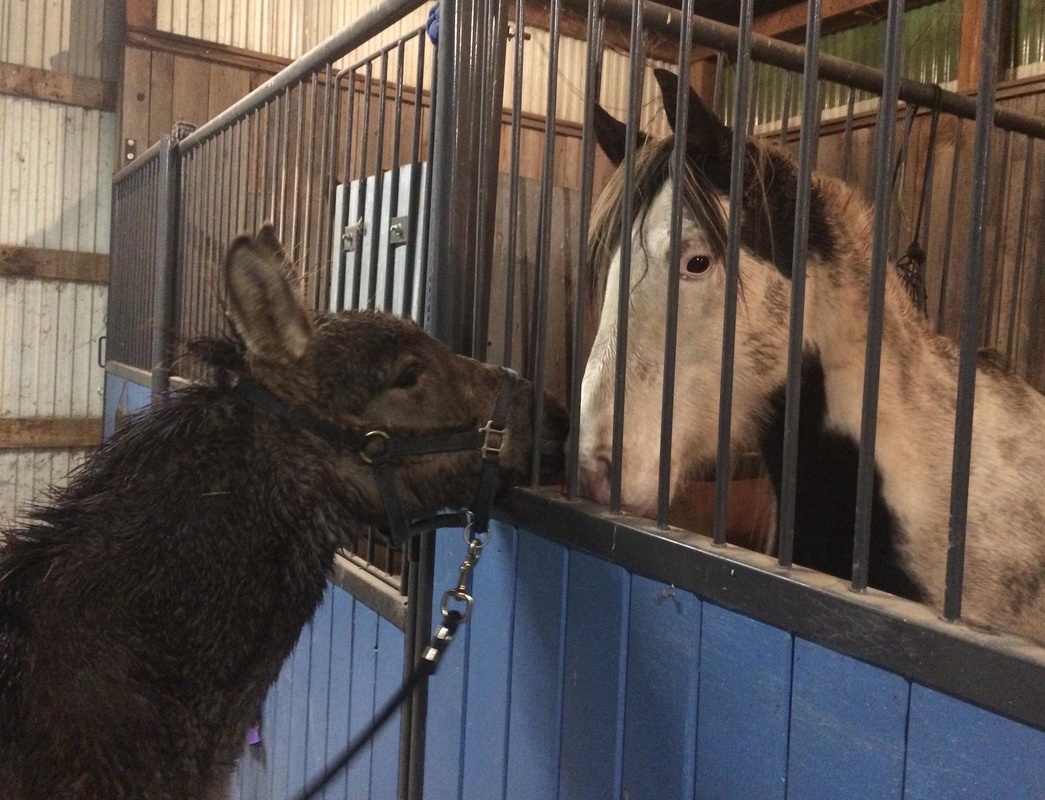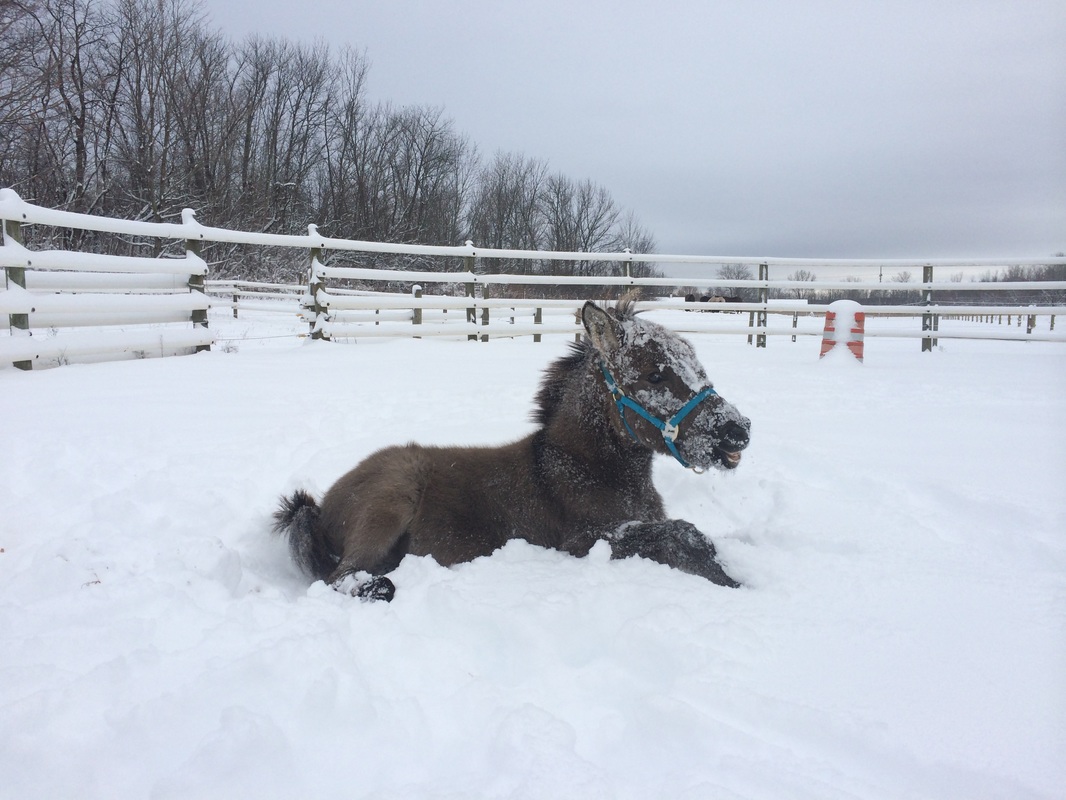|
FEATURE ARTICLES
by Mary A. Lainhart
A Short History of the
|
|
In the late 1830’s and with the belief in Manifest Destiny, the Native Americans were being displaced (and in some cases exterminated) so that more land could be acquired. Entire tribes of Native Americans had been captured. Their stallions were shot and the mares bred to draft type stallions in attempts to make farmers out of the nomadic tribes. Some tribes who owned horses had every horse they owned shot. Most Colonial Spanish horses were shot in the Indian Wars or bred out by the military. This continued through the American-Indian Wars (mid to late 1800s). The Native Americans relied so heavily on their horses for their way of life that a sure swift blow to their survival was to kill every single one of their horses, creating a submissive, broken people.
Manifest Destiny, a belief that the obvious destiny (as provided by God) of Anglo-Saxon settlers was to take over the American continent and all its resources, brought an onslaught of pioneers moving to the West. Many ranchers brought cattle and sheep to graze on the grasslands where the wild horses roamed. Many liked the wild Spanish stock because of their stamina and speed. Their stockier legs made them less prone to injury, making them ideal for long journeys. Pioneers cross bred these mustangs (derived from the Spanish word mestengo meaning “wild, stray, ownerless”) with their European stock to develop bigger horses. Many horses simply roamed free and were caught, as needed. These domesticated breeds cross bred with the mustangs. Inevitably, during round ups, mustangs were captured along with the domestic horses. The wild horse population grew. By 1900 North America had an estimated 2 million free-roaming horses. Now with the influx of settlers, miners, ranchers and farmers in the West, territory was being redistributed: more grazing rights to livestock, less to wild horse populations. Farming also took hold. Many wild horses were rounded up and shipped overseas to be used as military mounts in the Boer War in South Africa and also the Spanish American War. An estimated 1 million captured and “broken” mustangs went to Europe and Africa during the later years of the 19th Century and first half of the 20th Century to fight various causes – usually European, occasionally American. During World War I, ranchers went into business with the federal government raising horses for the Army. Between 1914 and 1917 around 1,000 horses were sent from the United States by ship every day overseas to serve in WWI for the British. The horses were so vital to the continuation of the war effort that ships carrying the horses were a constant target for German naval attack, with some lost en route. German saboteurs also attempted to poison them before they embarked on the journey. Only an estimated 200 returned. |
|
This map of Western-bound trails West in 1850 shows how far-ranging the Manifest Destiny movement took 19th century adventurers, with devastating effects on the Native American and equine population.
Map ©2016 Tangient LLC
Map ©2016 Tangient LLC
Endurance rider Frank Hopkins mounted on world famous Hidalgo. In 1890 Frank and Hidalgo (a wild mustang) won the 3,000 mile race in Arabia. There were only three other horses that completed the race. Photo courtesy of The Ontaior Pinto Horse Association.
Click here to see more of the true story of Frank Hopkins and Hidalgo
Click here to see more of the true story of Frank Hopkins and Hidalgo
British Artillery soldiers and their horses battled more than their human enemies during WWI. In Palestine in 1915-1918, there was little water or food. They froze at night and sweltered by day, surrounded by clouds of flies swarming the remains of dead soldiers and horses
← It was with misgivings that the British military introduced mules to the battlefields of WWI. In this video, Dr. Faith Burden, head of research at The Donkey Sanctuary in Devon, England, recounts how British soldiers came to realize that mules' supposed stupidity was actually a stubborn, smart, tenacity that served them well in military campaigns.
The Beginning of a Journey
by Mary A. Lainhart
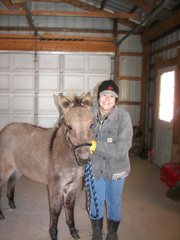
It's strange how life happens; I am a true believer in Divine Intervention and Divine Timing. It wasn't always that way. When I was young and thought I could take on the world, I thought I had control over my life. Work hard, get a good education, get my dream job, be a successful business woman with my own consulting business by the time I was 30. Life did not work out that way.
Somewhere along the way I stopped trying to control my life and started praying for guidance. I've heard people say that sometimes you have to be broke down before you can be built up again into someone stronger and better. I believe this is true. But what I wasn't aware of during this process is that God gives you pebbles along the way. Little pebbles for you to use along the way on your journey to make your solid path. A new friendship, a passing thought, something you read, someone you've heard about that made a difference and touched your soul. These little pebbles come in many shapes, sizes, and forms. They can be feelings, intuition, a husband you befriended by turkey hunting, a cat that was the beginning of you becoming a Reiki Master, a horse who taught you to break down your walls and open your heart to love and trust again.
Somewhere along the way I stopped trying to control my life and started praying for guidance. I've heard people say that sometimes you have to be broke down before you can be built up again into someone stronger and better. I believe this is true. But what I wasn't aware of during this process is that God gives you pebbles along the way. Little pebbles for you to use along the way on your journey to make your solid path. A new friendship, a passing thought, something you read, someone you've heard about that made a difference and touched your soul. These little pebbles come in many shapes, sizes, and forms. They can be feelings, intuition, a husband you befriended by turkey hunting, a cat that was the beginning of you becoming a Reiki Master, a horse who taught you to break down your walls and open your heart to love and trust again.
 Mud and loneliness. A dismal place to start out in life.
Mud and loneliness. A dismal place to start out in life.
So, this takes me to a new part of my journey. If you look hard in the mud patch by the barn, near the center of the picture below, you will see a baby mule trying to be gathered up. (It was quite a job running around in the mud, trying to catch his lead rope). This is where he was born and lived the first six months of his life, with a halter on and a catch rope...never handled, never given the time of day. I ask myself repeatedly, why did the owner of this little guy knowingly breed his mare and produce this little mule? Why? For what purpose? In October 2014 I contacted a woman who, I found out I indirectly knew through a friend, to transport Scottish Highland cattle we just bought. It ended up I didn't need her services, so that was the end of the story... or so I thought.
Fast forward to the beginning of December 2014. It was a Monday when I got a telephone call from that same woman; someone she knew had a 6-month-old Welsh cross john mule that needed a home. "His owner doesn't have time for him," she said "He has never had anything done with him.” The mule arrived at her barn that day and she was trying to work with him, the best she could, to teach him basics, like how to lead, etc. The original owner just wanted that mule gone.
Fast forward to the beginning of December 2014. It was a Monday when I got a telephone call from that same woman; someone she knew had a 6-month-old Welsh cross john mule that needed a home. "His owner doesn't have time for him," she said "He has never had anything done with him.” The mule arrived at her barn that day and she was trying to work with him, the best she could, to teach him basics, like how to lead, etc. The original owner just wanted that mule gone.
|
That Thursday, Buck and I were in Oswego County, NY, delivering hay to a friend. The young mule was being kept at a location that happened to be on our way home, so we stopped to see him. He had a great temperament, great disposition, good conformation. Surprisingly for an animal that had never been handled, the mule loved the attention, even though he was a little unsure about it at first. We measured him and to my dismay, he was only going to end up to be about 12 hands full grown. This is a great size for a child's mount, but not anything we could use, personally. We ride and pack all our horses and mules. So we walked out of his stall; I was the last one to leave. As I left he walked from the far corner of the stall and followed me to the door. As I closed the door to walk away, he put his little nose up to the bars and we touched noses and breathed each other in. That’s the same way that my wild mustang Neeheewanna had chosen me. Great!
Now I couldn’t stop thinking about the mule as I heard my husband, Bucky declare as we left, "He’s nothing we want.” Logically, that little mule wasn’t for us. But…here we go with opening yourself to the universe… I went home consumed with finding this little guy’s purpose. I thought, let’s get him for our new granddaughter; she was three weeks at the time. By the time he is old enough to ride, she will be too. Mules can live to be 40 or more years old. He is going to be the size of a pony. None of this made sense, but I couldn’t seem to shake thoughts about the mule out of my head. By Friday I was emailing everyone I could think of who might give this little mule a home. Then it came to me…the mule’s purpose could be therapeutic riding! This idea stuck in my head. He was the perfect size, perfect disposition for that role. I can’t get out of my mind an article I read at one time about how therapeutic riding has helped so many people in ways that were unfathomable. The seed was planted …so much so, it made me anxious. When Bucky got home that day, I had to tell him about this crazy notion and hear what he had to say about it all. My gut feeling and big heart were going to be a tough sell. I asked him to sit and hear me out, even though what I was going to say was off the wall. He listened, and then interjected, “I trust your judgment and if it makes you happy, we’ll go get him.” On Saturday afternoon we picked up the newest member of our herd. This little guy has a big future! I gave him the Lakota Sioux name of Icimani (ee-chee-mah-nee) meaning Journey, and Buck gave him the barn name Sweet Potato. In the future we share with Sweet Potato, I see him spending the first leg of his life’s path as our granddaughter’s handsome steed. And I see us training him to drive. We’ve started to work with him and will get him the training he needs when he’s old enough, so that eventually he can become a therapy animal and help others. He will be the source of many “pebbles” that touch others’ lives. He has already touched mine and Buck’s. Update: Sweet Potato will begin his ground training this month with Jack and Emma Minteer (January 2016 Issue). Stay tuned with Wild Heart Mustangs for updates on Sweets at school. |
"I don't ever focus on failure, only on how to keep improving. Why put the energy into the negative, when it can be put into the positive and make an exponential difference!" Mary A. Lainhart

